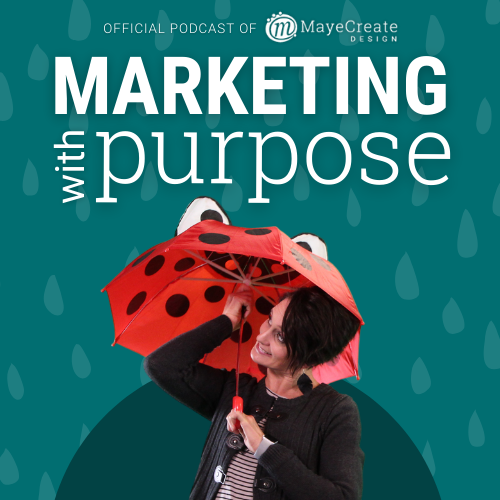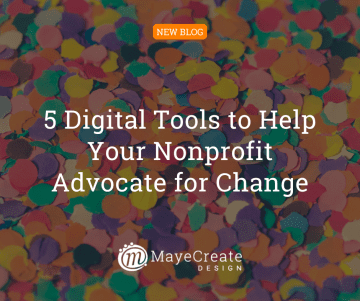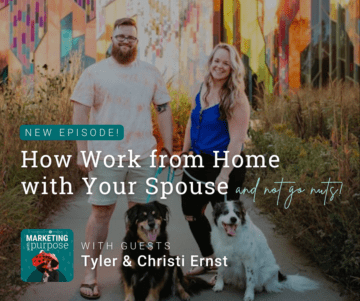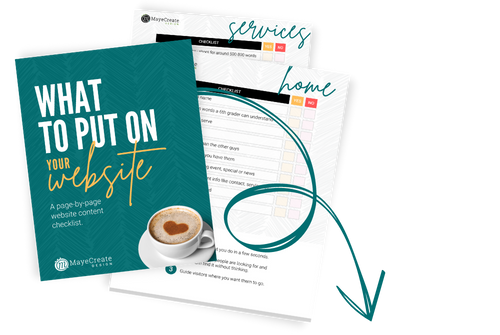Dos and Don’ts of Content Writing for Websites
February 3, 2023

CONSUME CREATIVELY
This content is available in:
This content is available in:
AUDIO
TEXT
Updated 10/26/2023
Website content writing is a funny thing.
People either love it or hate it.
They are either completely paralyzed by the idea of having to write for their website, or, they are like, yeah, I can totally tackle this.
A quick word of reassurance for my friends who feel paralyzed by writing for your website’s content and don’t have the budget to hire somebody else to do it – I want you to know if you can talk about your business, if you can email back and forth with clients and answer questions, you can totally write the content for your website. You’ve got this! And these dos and don’ts of content writing will help you build the confidence you need to get the job done!
Don’t be afraid to ask for help!
Start with a draft then call in for backup.
Just the other day, my brother called me and said, “Hey, Monica, I’m writing this really important letter. Will you please read it?”
And I absolutely did. I know he’s not a writer.
You have friends who will help you too. Don’t be afraid to ask!
Dos and Don’ts Overview
Do – Your Research
Great content writing starts with a plan.
You can’t get the right stuff out if you don’t have a plan for it. You’ll just start writing, and it won’t make sense, and that won’t help you build a website that will grow your business.
Start by looking at your competition.
We just talked about some of this stuff in a recent post, Time-Saving Tips for Your Website Redo. You should check it out because it will also help you along this journey.
Review their site. What do they say about their business? You could even copy and paste phrases you like. DO NOT PLAGIARIZE THEM. But getting creative fodder together is a huge part of the creative process.
Next, if you’re doing SEO, do your keyword research.
If your goal is to rank organically on Google for certain keywords, you have to do your research and know from the beginning what you’re going after, so you can include it in your text.
So hop on over to your favorite keyword research tool (Google Ads Keyword Planner, or Google Search Trends); heck, you could even look at Google Search Console for your own site. You can also research using a paid service like Serpstat.
The final draft of your content needs to include the chosen keywords in your website content. Whether or not you write with the keywords initially or work them in on the back end is up to you. I tend to prefer option two, but I do option one as well.
Don’t – Expect to rank for words you didn’t use on your website.
Back in the day, I built a website for a home builder and remodeler. They wrote all the content for their website, and I built the website and put in the content. They came back to me a year later, absolutely livid because they were not ranking for ‘home builder’.
Well, here’s the deal. They didn’t have ‘home builder’ written anywhere on their website. They only said ‘remodeler’.
You can’t rank for words that aren’t on your site, friends.
Google can draw inferences. It’s even smarter now than it ever was then. It does draw some parallels between the content you’re writing and what you do. Ultimately, though, if you want to rank for something, you need to include those words on your website. For instance, this post needs to contain the keyphrase “the dos and don’ts of content writing” or “content writing dos and don’ts” in order for it to show up in the search results.
Do – Write at least 500 to 1000 words per page.
Here’s the deal. We have all gone out and looked for a recipe online. You can learn so many things about search engine optimization from a recipe blogger.
It is super annoying when you have to scroll past all of the text to get down to the recipe, isn’t it? But the recipe bloggers do it for a reason. If they didn’t have all that stupid text on the page, Google would never find their recipe. There needs to be more text than just the recipe and the instructions to make Google find and rank that recipe.
The other reason they add all the extra text is that they have ads on their page. The more people see the ads, the more money they get paid.
Don’t – Just put a bulleted list on your page and expect that page to rank on Google.
Ultimately, you must have enough content on the page so that Google can read it and rank it (remember those recipe bloggers?). If you don’t have enough, Google won’t find you.
It’s not just for Google. It’s for the people that are buying your product too. They need to be able to read about the services you offer.
Prospective customers are researching before they ever call you. If you don’t have words on your page explaining what you do, how you do it and your competitive advantages, you won’t get that call.
Do – Stay Organized
As you’re researching and writing your content do a favor for future you – organize with intention. Here are a few tips I’ve learned over the years.
- Link to the competitors’ sites that have text you like, do you can use them for reference.
- Find snippets of creative inspiration and save them in a document.
- Outline what you want to put on each page before you start writing.
- Create a list of questions you would ask somebody about your services if you knew nothing about them and use it as a rubric to evaluate what you actually wrote for your website. If it doesn’t match the rubric, your copy isn’t ready.
Do – Develop a process that works for you for writing your content.
You don’t have to follow the same writing process as everyone else.
One of the ways I write my content is by creating an outline and then recording a podcast about it. Because it’s far easier for me to transcribe myself talking and then edit afterward than it is for me just to start writing.
This process works for me because I am an audio human being. If you don’t like writing, this process may be great for you, too, because you can save time by starting with something instead of with nothing.
Whatever process you use for your writing, lean into it.
Don’t – Make your writing all about you.
When you’re writing your content, you’re writing to help someone else solve their problems and fulfill their goals. It’s the reason you provide the services you do. Keep that in the forefront of your mind the entire time you’re writing.
I understand the first draft of your content is going to be in first person or first person plural, and you’re going to talk all about yourself. We all do that. During your second edit, though, take the time to flip it.
Your content needs to be about the person you’re writing to.
Instead of listing a benefit, and assuming people understand why it’s a benefit, tell them how it’s good for them. There are places on your website for you to talk about how awesome you are. The About or History section of your website are a great place for it. On your services pages, though, stay externally focused – How does your service help your audience solve their problem?
One problem everyone loves to solve is time. People want to know how your service will make their life better; how it will save them time. How will it help them move to the next thing and save energy? Use your content to tell people those things.
For example, when we are talking about the bonuses in our Better Than DIY Website program, we could say we have live and recorded tech support sessions for five weeks, then talk about how extremely qualified we are as a company.
But that would just be me talking about myself. You probably stopped reading and started scanning somewhere in there. We don’t want that, so instead, we say this:
Nothing is worse than setting aside time for a project only to fall into a big black tech hole. Searching the internet for hours isn’t a solution for business owners on a time crunch. You’ll get five weeks of live tech support. Hop on, share your screen and we’ll troubleshoot together.
That is talking to our audience about what they want and explaining the benefit of that bonus.
Do – Hire an editor.
We went over this earlier. Ask someone else look over your content before you share it with the world. Even if you don’t hire an editor, have someone else read your content and make sure it makes sense.
Look for two volunteers.
One who knows what you do to read your content and another that has no clue what you do but is in your target market.
We have at least three sets of eyes on every single piece of content MayeCreate produces before it’s ever published or printed.
- The person who wrote the content
- The account service person or the Art Director
- The client
All three need to look at the content before we decide that it’s done. You can create a similar support system by pooling folks, hapless volunteers, family members to come in and read your content.
Do – Outsource writing your content if…
I really do think that most people have what it takes to at least get the first draft of their website content together for themselves. But you should definitely outsource it if…
- You absolutely hate writing, and you have the budget to pay someone to write it for you.
- You are trying to sell your product online without further interaction. You’re going to need really persuasive content. If you’re not a great writer, you probably can’t write that yourself.
- Your expectations don’t align with your skill set. If you want your website to be super polished with a strong brand message, but you can only make a poorly organized bulleted list, then do not write your own website content, friend. Find someone to help you do it.
There you have it, the content writing dos and don’ts for your website.
- Do your research.
- Don’t expect to rank for words you didn’t use on your website.
- Do write at least 500 to 1000 words per page.
- Don’t just put a bulleted list on your page and expect that page to rank on Google.
- Do stay organized.
- Don’t make your writing all about you.
- Do hire an editor.
- Do out source your content if…
Getting your website content written and done can be a huge barrier to success in finishing your website. Not having the right content can be a huge barrier to success in using the website to grow your business. That’s why we dedicated an entire module in the Better Than DIY Website program, Writing for the Web 101, to help you get through that process quickly and easily. You won’t start from scratch. You’ll start with templates and have all the training you need to get awesome words out and get that website done.
Learn more about the Better than DIY Website Program.
Visit the Better than DIY Website Program page to learn how to transform your website from craptastic to fantastic in five weeks without getting a second mortgage or learning to code.
Who Manifested This Madness?

This fabulous human, that's who.
Monica Maye Pitts
Monica is the creative force and founder of MayeCreate. She has a Bachelor of Science in Agriculture with an emphasis in Economics, Education and Plant Science from the University of Missouri. Monica possesses a rare combination of design savvy and technological know-how. Her clients know this quite well. Her passion for making friends and helping businesses grow gives her the skills she needs to make sure that each client, or friend, gets the attention and service he or she deserves.






